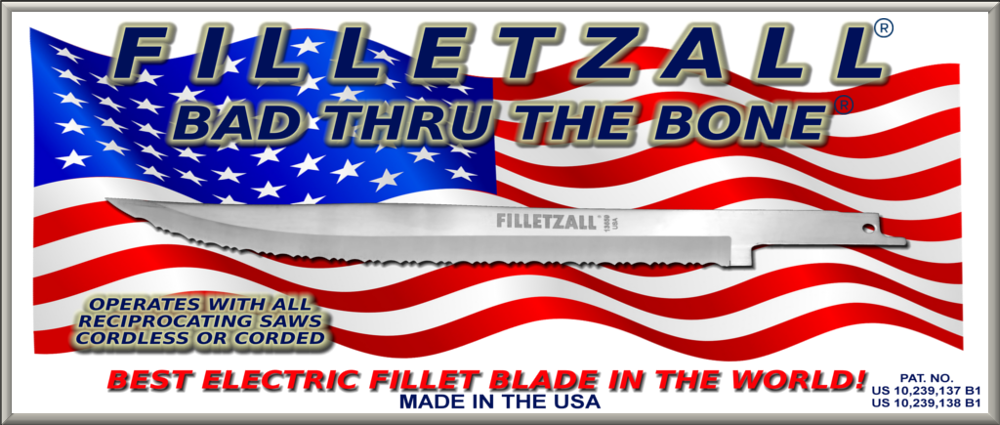Bates contacted Dexter- Russell and they cut a deal. The New England-based company that has been crafting fine cutlery for 200 years builds fillet knife blades for Filletzall, the company Bates started.
“I wouldn’t have done this if I couldn’t have had the blades made in the U.S.,” Bates said.
Since getting off the ground in 2017, the company has expanded its line of fillet knife blades to three models – 8-inch, 12-inch and an 8.5-inch “freshwater” blade that’s thinner and more flexible than the two “fullsize” blades. A 10-inch model is in the works, Bates said.
“It was something built out of necessity,” Bates said. “I knew it would benefit other fishermen as much as it did me.”
Just a year on the market, Filletzall blades have been snatched up by anglers, guides, commercial fishers, fish markets and others along the Gulf Coast and beyond.
Filletzall has shipped blades to Australia and Hawaii, has the blades in 120 retail stores along the Gulf Coast and in states bordering the Great Lakes and in the Northwest. It does a brisk business directly with anglers through its website, filletzall.com, shipping blades across the nation and, increasingly, the world.
Bob Ferrante, who owns and operates April Sound Bait and Tackle on Lake Conroe, was so taken with the Filletzall blades that he’s become part of the business. And he’s one of the best advocates for their usefulness and durability.
“You don’t ever have to worry about the reciprocating saw getting hot and burning up or seizing up,” Ferrante said. “And the blades are just incredible. I cleaned more than 4,000 fish with the freshwater blade and it works just as good now as it did when it was brand new. You can’t even tell there’s any wear on it.”
Bates and Ferrante are quick to say using a Filletzall blade coupled with a compact reciprocating saw takes some getting used to.
'Learning curve'
The difference in using a reciprocating saw and a standard electric fillet knife is like the difference between driving a basic sedan and a high-performance sports car.
“There’s definitely a learning curve,” Ferrante said. “But once you figure it out, you can clean fish so much faster and easier than you ever did before.”
The price difference between the two filleting tools is not significantly different. Filletzall blades run $30-$40, depending on model. Compact reciprocating saws – corded or cordless – cost $80-$120, depending on make and model.
Premium electric fillet knives cost $70-$100, with replacement blades going for $10-$20.
Still, making the change to the “performance” filleting tools isn’t something all anglers will are certain to find beneficial. Some anglers find the compact reciprocating saws too large or bulky or otherwise ergonomically uncomfortable to wield with the precision necessary to efficiently carve fillets. And anglers who seldom retain more than a handful of thinskinned fish can find regular electric fillet knives or fixed-blade fillet knives work just fine for them.
But for anglers who end a day of fishing and face filleting a couple of limits of redfish or a pile of white bass, cutting steaks from tuna or wahoo or mackerel or carving grouper or shark or even the dreaded, daunting job of filleting a halfdozen sheepshead, a Filletzall blade and a compact reciprocating saw can — will — make that task go much faster and much more efficiently.
And that can make the reward of that plate of fresh fish even more enjoyable.
This email address is being protected from spambots. You need JavaScript enabled to view it.
twitter.com/chronoutdoors
FILLETZALL BLADE
TODAY!
